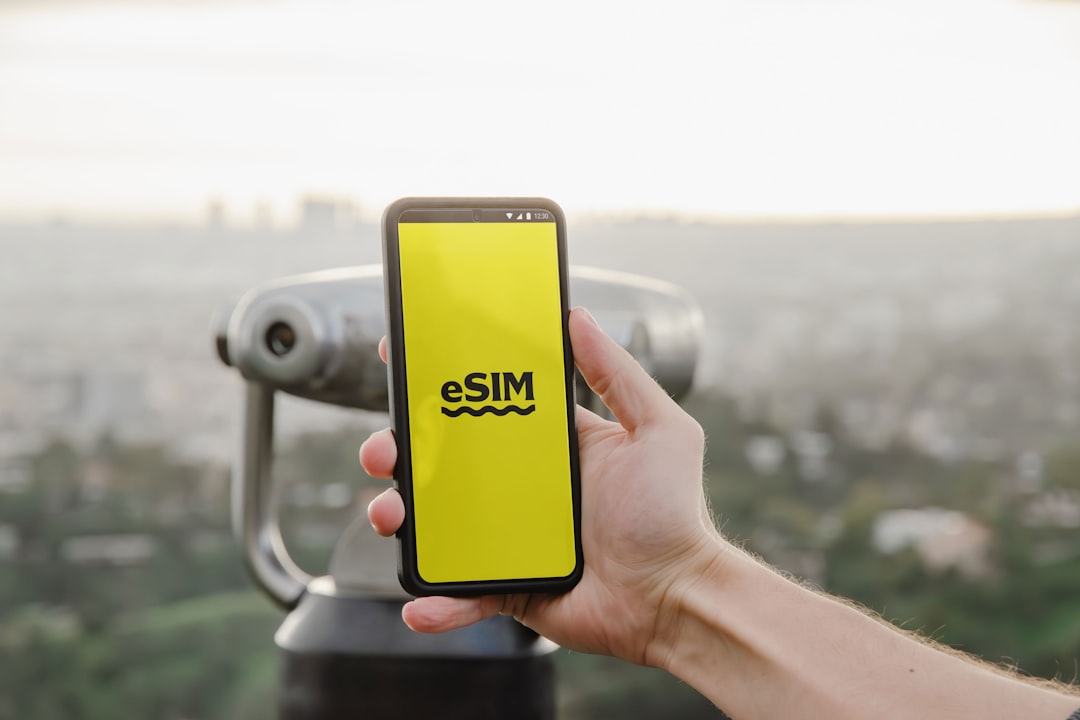Tax Filing Hacks for Remote Workers and Digital Nomads

Introduction
Remote work has turned the traditional office into a flexible concept that can be set up on a beach in Bali, a co‑working space in Berlin, or a mountain cabin in Colorado. For digital nomads the freedom to move is priceless, but it also creates a maze of tax obligations that can quickly become overwhelming. Unlike a static employee who files a single state return each year, a nomadic professional may have to deal with multiple jurisdictions, foreign income rules, and the ever‑changing landscape of tax treaties.
This guide gathers the most effective “hacks” that let you stay compliant, keep more of your earnings, and spend less time staring at forms. Whether you are a freelancer, a contractor for a US‑based company, or an employee working remotely from abroad, the strategies below will help you build a tax‑smart workflow that moves as fluidly as your lifestyle.
Get Clear on Your Tax Residency
Why Residency Matters
Your tax residency determines which country has the primary right to tax your worldwide income. Most nations use a “physical presence” test (often 183 days) or a “center of vital interests” test (where your family, home, and economic ties are strongest). A mis‑identified residency can lead to double taxation, missed filing deadlines, or even penalties for non‑compliance.
Quick Residency Checklist
- Count the days you spend in each country over a calendar year.
- Identify your “home base.” This can be the country where you hold a driver’s license, maintain a permanent address, or where your immediate family lives.
- Review local rules. Some countries, such as Portugal and Mexico, have special “non‑habitual resident” or “temporary resident” regimes that offer tax incentives.
- Document everything. Keep boarding passes, rental agreements, and utility bills that prove where you were on specific dates.
Hack: Use a “Tax Home” Declaration
If you are a US citizen or resident alien, the IRS allows you to designate a tax home for the purpose of the foreign earned income exclusion (FEIE). Your tax home is the location of your main place of business, regardless of where you maintain a personal residence. By establishing a foreign tax home early, you can qualify for the FEIE even if you travel frequently.
Choose the Right Tax Strategy
Foreign Earned Income Exclusion (FEIE)
The FEIE lets qualifying US taxpayers exclude up to $120,000 (2024 amount) of foreign earned income from US taxable income. To qualify, you must meet either the Physical Presence Test (330 full days abroad in a 12‑month period) or the Bona Fide Resident Test (resident of a foreign country for an uninterrupted tax year).
Hack: Combine the FEIE with the Foreign Tax Credit (FTC). The FEIE excludes a set amount, but any foreign tax you paid on the remaining income can be offset against your US tax liability via the FTC. This dual approach often yields a lower overall tax bill than using either method alone.
Tax Treaties
The United States has tax treaties with over 60 countries. These agreements can reduce or eliminate withholding on certain types of income (dividends, royalties, and even self‑employment income).
Hack: Before you sign a contract with a foreign client, check the relevant treaty article. In many cases you can claim a reduced withholding rate by filing Form W‑8BEN with the payer. This saves cash flow and reduces the amount you later have to report as foreign tax credit.
Incorporate Offshore or Domestic
Forming an entity—whether a US LLC, a foreign corporation, or a partnership—can provide liability protection and tax planning flexibility.
Hack: If you earn a high proportion of income from a single client, consider setting up a US LLC taxed as an S‑corp. By paying yourself a reasonable salary and taking the remainder as distributions, you can lower self‑employment tax. For truly global income streams, a low‑tax jurisdiction such as Estonia (e‑Residency) can be used to invoice clients while keeping the entity’s profit tax modest. Always consult a cross‑border tax advisor before incorporating abroad.
Master Record‑Keeping on the Move
Digital Receipts and Cloud Storage
Paper receipts are easy to lose on a backpacking trip. Use a scanner app (e.g., Expensify, Receipt Bank, or the free Adobe Scan) to capture every expense immediately. Store the PDFs in a cloud folder organized by year and category (travel, home office, professional services, etc.).
Hack: Tag each receipt with the tax year and the relevant tax form line (e.g., “Schedule C – Advertising”). This makes pulling together deductions for year‑end filing a few clicks away.
Separate Business and Personal Finances
Open a dedicated business bank account and a credit card that you use only for work‑related purchases. Even if you are a sole proprietor, this separation simplifies tracking and reduces audit risk.
Hack: Use a “virtual mailbox” service that provides a US mailing address and scans all incoming mail. This ensures you receive tax documents (1099‑NEC, 1099‑INT, etc.) wherever you are physically located.
Mileage and Travel Logs
If you claim vehicle expenses, you need a contemporaneous log of miles driven for business versus personal use. Mobile apps like MileIQ automatically record trips and let you classify them later.
Hack: Set a weekly reminder to review and categorize trips while the memory is fresh. This prevents gaps that could invalidate the deduction.
Leverage Deductions Specific to Remote Workers
Home Office Deduction
You can deduct a portion of rent, utilities, internet, and insurance if you have a space used exclusively for business. The IRS offers two methods: the Simplified Option ( $5 per square foot up to 300 sq ft) or the Regular Method (actual expenses prorated by square footage).
Hack: Measure your workspace with a tape measure and take a photo. Keep the measurement record for at least three years in case the IRS asks for proof.
Internet and Phone
Even if you have a personal plan, a portion of your monthly bill can be allocated to business use. Calculate the percentage of time you use the service for work versus personal activities.
Hack: Run a simple spreadsheet for a month tracking the minutes and data used for calls, video conferences, and uploads. Apply the same percentage to the entire year’s bill.
International Health Insurance
Premiums for a qualified health plan are deductible for self‑employed individuals on Schedule SE. Many nomads purchase a global health insurance policy that meets the “minimum essential coverage” requirement.
Hack: Choose a plan that issues a Form 1095‑B (or the foreign equivalent) and keep the receipt of payment. This not only satisfies the ACA requirement but also gives you a solid deduction.
Education and Skill Development
Courses, certifications, and software subscriptions that directly improve your ability to earn income are deductible. For instance, a Udemy course on advanced Python or a subscription to a design tool.
Hack: Write a brief note on the receipt explaining the business purpose (e.g., “Learned new data‑visualization techniques for client projects”). This helps substantiate the expense if audited.
Navigate Self‑Employment Tax
If you are a freelancer or independent contractor, you are subject to the 15.3 % self‑employment tax on net earnings. This tax covers Social Security and Medicare, which you would otherwise pay through payroll withholding.
Quarterly Estimated Payments
The IRS expects you to make quarterly estimated tax payments if you expect to owe at least $1,000 in tax after subtracting withholding and credits. Use Form 1040‑ES to calculate each payment.
Hack: Align your payment dates with your invoicing schedule. If you invoice monthly, set a recurring calendar event on the 15th of each month to transfer a portion of the net income to a separate “tax reserve” account. Then make the quarterly payment using that accumulated fund—no scrambling for cash.
Deducting the Employer Portion
When you compute net earnings on Schedule C, you can deduct the “employer” portion of self‑employment tax (half of the 15.3 %). This deduction reduces your adjusted gross income (AGI) and can lower the amount subject to the FEIE or foreign tax credit.
Hack: Add a line item on your expense tracking spreadsheet called “SE Tax – Employer Half.” Treat it like any other business expense for internal budgeting.
Optimize Currency Conversion and Reporting
Choosing the Right Exchange Rate
The IRS permits you to use either the yearly average rate (if the currency is stable) or the spot rate on the day of receipt. For large lump‑sum payments, the spot rate may be more advantageous.
Hack: Keep a spreadsheet that records the USD equivalent for each foreign invoice using the rate from a reputable source (e.g., OANDA or the Federal Reserve). When the year ends, compare the total converted amount with the yearly average rate; if the difference exceeds $200, consider filing an amendment to claim the lower tax.
Reporting Foreign Bank Accounts (FBAR)
If the aggregate value of your foreign financial accounts exceeds $10,000 at any time during the year, you must file FinCEN Form 114 (FBAR). The filing deadline is April 15 with an automatic extension to October 15.
Hack: Use a cloud‑based accounting platform that integrates with foreign banks via API. Many platforms generate the required total balance automatically, reducing the risk of omission.
FATCA (Form 8938)
US taxpayers with specified foreign assets above certain thresholds must also file Form 8938 with their tax return. The thresholds vary by filing status and residence (e.g., $200,000 for single filers living abroad).
Hack: Consolidate all foreign investment statements into a single PDF folder. Highlight the “fair market value” line on each statement and total them in a spreadsheet. This makes completing Form 8938 a matter of copy‑and‑paste.
Take Advantage of Country‑Specific Incentives
Portugal’s Non‑Habitual Resident (NHR) Regime
Portugal offers a ten‑year tax incentive for qualified newcomers. Under NHR, foreign‑sourced employment income may be taxed at a flat 20 % or even exempt if it is considered “high value added” professional activity.
Hack: Register for NHR within the first year of residence and keep a copy of the approval letter. When filing US taxes, claim the foreign tax credit for any Portuguese tax paid, effectively reducing your US liability to near zero.
Thailand’s Smart Visa for Digital Nomads
Thailand’s Smart Visa allows remote workers to stay up to four years without needing a work permit. While Thailand does not impose personal income tax on foreign‑sourced income, you still need to file US returns.
Hack: Treat Thailand as a tax‑neutral jurisdiction. Maintain documentation that your income is earned from services performed outside Thailand (client contracts, timestamps, server locations). This supports the claim that the income is foreign‑sourced for US tax purposes.
Mexico’s Temporary Resident Visa
Mexico offers a temporary resident visa that can be renewed annually for up to four years. The country taxes only Mexican‑sourced income, making it attractive for nomads who bill foreign clients.
Hack: Keep a “source of income” log that records the client’s country, the contract location, and the work location for each project. This log can be used to demonstrate that your earnings are not Mexican‑sourced if questioned by the tax authority.
Tools and Software that Streamline Filing
| Need | Recommended Tool | Why It Helps |
|---|---|---|
| Expense capture & receipt storage | Expensify (free tier) | Auto‑scan, categorise, and export to CSV for tax software |
| Invoicing with multi‑currency support | FreshBooks | Generates invoices in client’s currency and tracks exchange rates |
| Accounting & tax integration | QuickBooks Online | Links bank feeds, calculates quarterly estimates, and exports Schedule C data |
| Currency conversion reference | OANDA app | Provides historic daily rates for accurate USD conversion |
| FBAR filing | IRS‑approved e‑file providers (e.g., TaxAct, TurboTax) | Built‑in validation and automatic filing to FinCEN |
| Tax treaty lookup | IRS website “Treaties” page | Search by country, view PDF of each treaty article |
Hack: Set up Zapier or Make.com automations that move data between these tools. For example, when a new receipt is added in Expensify, a row can be appended to a Google Sheet that aggregates expenses by category. This eliminates manual data entry and reduces errors.
Common Pitfalls and How to Avoid Them
Mistaking “Foreign‑Sourced” Income
US tax law defines foreign‑sourced income as compensation for services performed outside the United States. If you work on a project while physically in the US—even if the client is overseas—the income is US‑sourced.
Avoidance tip: Use a time‑tracking app that records your location (GPS) for each work session. Export the logs to prove where the work was performed.
Ignoring State Tax Obligations
Many remote workers think they can ignore state taxes by moving abroad, but most states still consider you a resident if you maintain a driver’s license, voter registration, or a permanent address there.
Avoidance tip: Sever all ties with your former state before you leave. Cancel your vehicle registration, surrender the driver’s license, and file a part‑year resident return for the year you move.
Overlooking the “Foreign Housing Exclusion”
If you qualify for the FEIE, you may also exclude or deduct reasonable housing expenses up to a statutory limit (about $28,000 for 2024). This can dramatically lower taxable income.
Avoidance tip: Track rent, utilities, and other qualified housing costs in a separate column. At year‑end, compare the total to the allowable limit and claim the exclusion on Form 2555.
Failing to Pay Quarterly Estimated Taxes
Missing a quarterly payment triggers a penalty even if you later pay the full amount with your return.
Avoidance tip: Set up automatic ACH transfers from your tax reserve account to the IRS Treasury Direct portal on the due dates (April 15, June 15, September 15, January 15 of the following year).
Not Filing FBAR on Time
The FBAR penalty can be as high as the greater of $10,000 or 50 % of the account balance. The IRS also imposes separate penalties for late Form 8938 filing.
Avoidance tip: Add a recurring calendar event titled “FBAR deadline” on October 15 each year. Use a tax‑compliant cloud storage service that retains the file for at least six years.
A Step‑by‑Step Action Plan for the Upcoming Tax Year
- Determine Your Residency – Count days, review local rules, and document your tax home.
- Choose a Tax Strategy – Decide between FEIE, FTC, or treaty benefits based on projected income.
- Set Up Financial Infrastructure – Open a business bank account, get a virtual mailbox, and select a credit card for work expenses.
- Implement a Capture System – Install a receipt scanner, mileage tracker, and time‑location logger.
- Create a Tax Reserve Account – Allocate a percentage of each payment (e.g., 30 %) to this account for estimated taxes.
- File Quarterly Payments – Use Form 1040‑ES to calculate and submit on the due dates.
- Track Foreign Housing Costs – Log rent, utilities, and insurance; compare to the exclusion limit.
- Maintain FBAR & FATCA Records – Keep a running total of foreign account balances and upload statements monthly.
- Review Treaty Opportunities – For each foreign client, verify whether a reduced withholding rate applies.
- Prepare Year‑End Documents – Export expense reports, convert foreign invoices, and reconcile bank statements.
- Complete US Return – Fill Schedule C, Form 2555 (if using FEIE), Schedule SE, and any applicable state forms.
- File FBAR & Form 8938 – Submit by October 15; keep copies of all supporting documents.
- Plan for Next Year – Evaluate whether your current strategy minimized tax; adjust residency or entity structure if needed.
Final Thoughts
Being a remote worker or digital nomad offers unparalleled lifestyle freedom, but it also places the responsibility of tax compliance squarely on your shoulders. By establishing a clear residency status, leveraging the foreign earned income exclusion together with foreign tax credits, maintaining meticulous digital records, and using automation tools, you can turn tax filing from a dreaded chore into a manageable routine.
Remember that tax laws change frequently, especially in the realm of international agreements and digital‑economy regulations. Treat the strategies in this guide as a living framework—review them annually, stay informed about treaty updates, and consult a qualified cross‑border tax professional whenever you contemplate a major change such as incorporating abroad or moving to a new jurisdiction.
With the right systems in place, you can focus on the work you love, the places you want to explore, and the financial peace of mind that comes from knowing your taxes are handled smartly and efficiently. Safe travels and happy filing!
Random Posts

Live and Work Abroad Top Spots for Digital Creatives
Discover the top cities for digital creators to live and work abroad, judged by community, cost, internet, culture, coworking spaces and visa steps, and find your perfect creative hub
2 months ago

Kickstart Your Nomad Adventure With Proven Strategies
Kickstart your nomad adventure with proven strategies: adopt a flexible mindset, plan smartly, secure reliable internet, and use seasoned tips to transition smoothly, stay productive, and thrive from day one.
1 month ago

Tax Compliance Made Simple for Global Citizens
Learn how nomads can master tax compliance with a simple framework, essential residency rules, filing thresholds and treaty tips, turning tax stress into a routine part of your global lifestyle.
1 month ago

Lisbon to Tallinn A Nomad’s Guide to Europe
From sunny Lisbon’s affordable coworking scene to Tallinn’s medieval charm and booming tech hub, this guide maps the perfect nomad route, travel tips and essential info for a smooth, productive European adventure.
1 month ago

Offshore Strategies and Legal Hacks for Modern Nomads
Learn how modern nomads can protect assets, cut tax leakage and stay compliant by using offshore structures, smart residency planning, travel-proof banking, and legal hacks, all in one clear roadmap.
3 weeks ago
Latest Posts

Essential Software Every Remote Professional Should Use
Master remote work with essential tools: instant messaging like Slack, high definition video calls such as Zoom, and asynchronous voice apps. Streamline communication, stay connected and boost productivity.
1 day ago

Mastering Remote Work Productivity for Digital Nomads and Freelancers
Learn proven habits, tools, and tactics that help digital nomads and freelancers stay focused, deliver quality work, and maintain a sustainable lifestyle while traveling the world.
1 day ago

Tech‑Friendly European Towns Perfect for Remote Living
Discover Europe’s best small towns where fast internet, affordable living and vibrant tech communities let you work remotely while soaking up historic charm, lakeside views or mountain air.
1 day ago